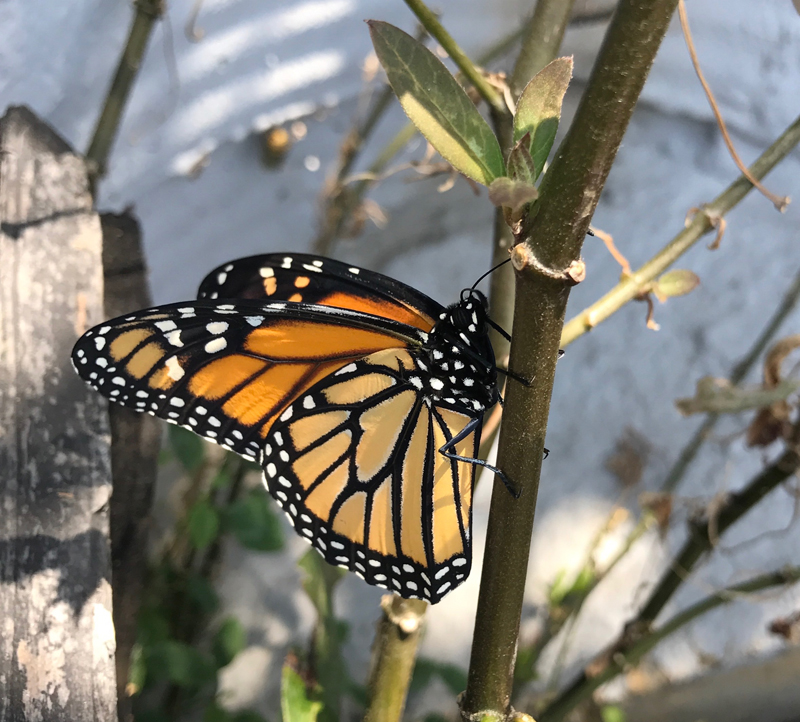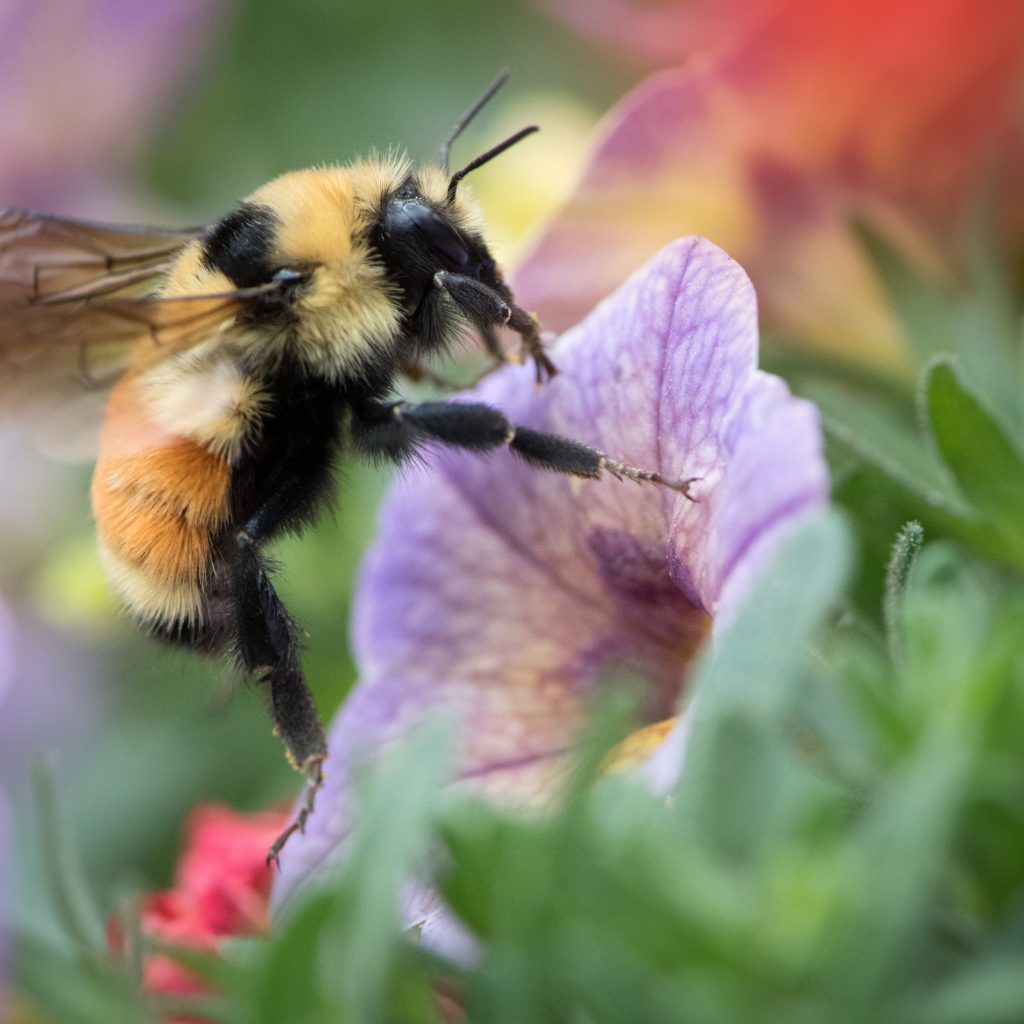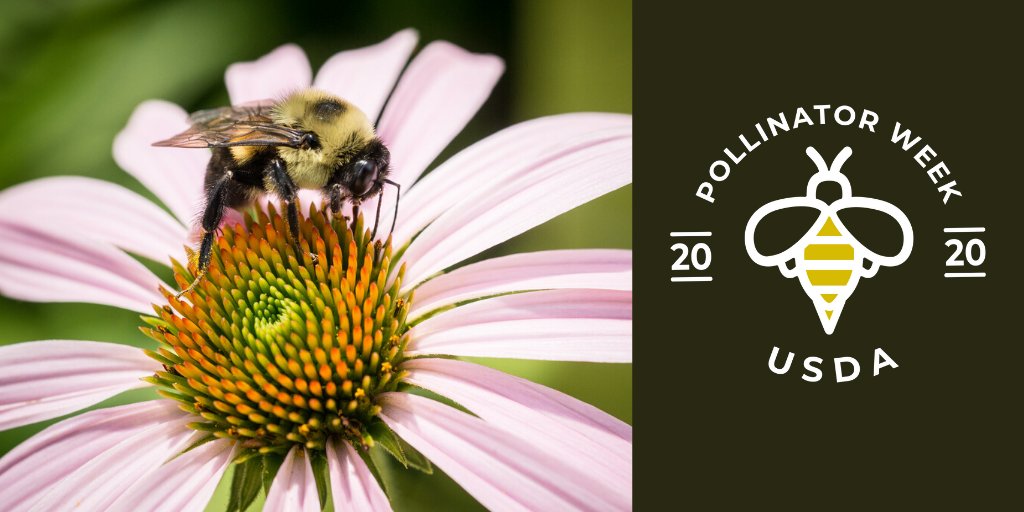We know you might be distracted by everything going on in the world, so give us a minute or two of your attention. The planet is counting on you.
“National Pollinators Week” is officially here from June 22 – 28 and it’s worth taking just a few minutes to learn why it’s important to support pollinators and reverse a growing crisis for our planet.
National Pollinators Week got started in 2006 through an official U.S. Senate resolution. That year, there was a mysterious loss of honey bee colonies in the United States.

It’s officially National Pollinators Week – do something to help provide habitat and save the pollinators.
Pollinators are vital to 75 percent of the world’s food crops, from avocados to zucchini; and 90 percent of the world’s flowering plants. If pollinators like bees, butterflies, birds, bats, and others disappear, so do our plants and our food supply. And we’ll be next.
Have we got your attention now?
Good Earth Plant Company does its part with our rooftop milkweed garden.
The Western monarch butterfly is one of the most recognizable insects in the world. It is called “the ambassador of nature.” In coastal California cities where migrating monarch butterflies have traditionally spent their winters like Pacific Grove, Pismo Beach, and Santa Barbara, there is a whole tourism industry built around the butterflies. Ten million monarch butterflies used to spend the winter in California during the 1980s, according to estimates.
But western monarch butterflies are quickly disappearing and in danger of extinction. Their population has declined more than 99 percent since the 1980s. Yes, you read this right. Only one percent of the peak population is left today.
The 2019 Western Monarch Thanksgiving Count organized by the Xerces Society for Invertebrate Conservation went up slightly from 2018’s bad news. The count is up to 29,418 – but that’s barely over the 2018 all-time low of 28,429 monarch butterflies in California. It was an 86 percent drop from 192,668 in 2017.
Why is this happening? There are multiple reasons such as loss of tree groves to development and pesticide contamination. But one of the biggest reasons is the removal of milkweed. Monarchs are dependent on milkweed.
No milkweed, no monarchs.
Monarchs cannot survive without milkweed. Their caterpillars only eat milkweed plants, and monarch butterflies need milkweed to lay their eggs. Because we have lost so much milkweed from California’s landscape, we are losing the monarchs too.

The western California monarch is in danger of extinction. Good Earth Plant Company provides critical milkweed habitat and we’re thrilled to see it working. Photo: Erin Lindley
There aren’t many opportunities for any one individual to really make a difference, but you can help save a species from extinction. Plant milkweed in your garden and where you can to support monarch populations. Planting milkweed helps other important pollinators too, not just monarchs.
But you can’t plant just any variety of milkweed. California has 15 native varieties of milkweed, and you should plant ONLY one of these natives. Two are pretty common, showy milkweed (Asclepias speciosa), and narrow-leaved milkweed (A. fascicularis). You should be able to find them in many garden centers or plant suppliers. AVOID planting tropical milkweed (A. curassavica), which is NON-native to California.
While you are at it, plant native wildflowers, and other favorites of pollinators. Find a section of your landscaping you can dedicate to a pollinator garden. Other good plant choices include many different herbs including lavender and sage which both grow well in Southern California, geraniums and sunflowers, and others. If you need help, ask anyone at your favorite garden center.

Have you heard the buzz? Bees are critical to our food supply and the healthy growth of the Earth’s plants.
We are lucky enough to have a plant supplier in San Diego County that focuses on producing plants specifically for butterflies. Luca & Michaela Nursery also operates the nonprofit Butterfly Farms in Encinitas. You can also sponsor a single butterfly with a donation, or a lot more. Be sure to sign up for the newsletter!
The nursery can help you set up a butterfly garden or just send some butterfly-friendly plants home with you. I love their promise on the website: “Just come down for a visit, our prices are fair, and you’ll leave with a happy attitude, we guarantee it.”
Whether you love monarch butterflies or not, you need to be concerned about them.

Many other animals assist in pollination every day besides bees. Birds, beetles, bats and flies are just a few of the many animals that work to carry pollen from one plant to another as they collect nectar.
This monarch decline could indicate wider effects on the ecosystem. Monarch butterflies are considered an “umbrella species.” Protecting monarch butterflies also protects many other species that share its habitat. Other species under the monarch’s umbrella of protection are also declining, because the butterflies play an important role in their ecosystems. Caterpillars grow to be monarchs but they are also a source of food for many other birds and animals. Less milkweed equals fewer caterpillars means a reduced amount of food for insect-eating birds and the rodents that are food for bigger carnivores. You can see how this works pretty quickly.
California scientists believe the monarch population could recover fairly quickly, but ONLY if we all step up to help. While you might not be able to plant milkweed on your green roof like me, can’t you add a little bit to your garden – maybe on that canyon slope or in a side yard that needs some attention?
Be sure to add pollinator-friendly flowers, since adult monarchs will drink the nectar of many flowers in addition to milkweed. Include a variety of native flowering species with different bloom times to provide monarchs with the food they need to reproduce in the spring and summer and to migrate in the fall. Offering a wide array of native nectar plants will attract monarchs and many other butterflies and pollinators to your yard all season long, and think of how much you’ll enjoy watching them and knowing you did your part.
More pollinator information resources:
Watch an informative video from our friends at The Living Desert Museum in Palm Desert.
For a brief how-to flyer on planting and gardening, download the Monarch Joint Venture’s Gardening for Monarchs.
For more information about planting milkweed, download the MJV Milkweed Fact Sheet.
Visit the Xerces Society for Invertebrate Conservation website for this good information sheet about Southern California pollinator friendly plants.
More pollinator resources in California from the Xerces Society.
We enrich people’s lives with plants at Good Earth Plant Company. Have a question? Email us at info@goodearthplants.com

